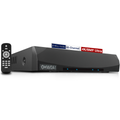Troubleshooting Common Issues in Video Surveillance Systems - Insights from OHWOAI
Introduction
Video surveillance systems are essential tools in maintaining security and monitoring activities in various environments. However, with their widespread usage, there's a possibility of encountering numerous issues that can disrupt their functionality. OHWOAI, a reputable brand in surveillance solutions, shares its expertise in identifying and resolving common problems in video surveillance systems. This comprehensive guide provides valuable insights into recognizing issues and implementing effective solutions to ensure optimal system performance.
- Short Circuits
Improperly connected or mismatched wiring between devices can result in short circuits, open circuits, poor insulation, or incorrect connections. These issues can lead to performance degradation or even equipment damage. To address this, analyze and identify the malfunctioning components and their potential effects on the system. Always ensure that wiring connections meet the requirements for prolonged system operation.
- Interference
Mismatched impedance in transmission cables can cause interference patterns on the monitor display, manifesting as vertical bars. These patterns are usually multiples of the AC power frequency. To minimize interference, focus on impedance matching between devices. When selecting video cables, prioritize quality and perform sample testing when necessary.
- Incorrect Communication Parameters
Communication settings, such as protocols and interfaces, may be misconfigured between control hosts, decoders, and control keyboards. Ensure proper parameter configuration during installation to establish successful communication between devices.
- Common Video Interference Issues
Various video interference issues can arise, including:
- **50Hz Interference:** Horizontal bars rolling on the screen caused by AC power frequency interference.
- **Snow-Like Noise:** Grainy artifacts resulting from signal attenuation and high-frequency interference.
- **Ghosting and Whiteout:** Overlapping images, character jitter, or vertical bars due to impedance mismatch.
- **Rolling Lines, Flickering, and Power Interference:** Distracting interference patterns caused by signal quality or power issues.
- Power Supply Problems
Issues related to power supply include incorrect voltage or wiring, inadequate power capacity, and transient voltage spikes. Incorrect power supply can damage equipment. Before installation, carefully inspect and verify all power connections to prevent potential damage.
- Cable Faults Causing Extensive Interference
Cable faults such as short circuits or breaks in the shielding can lead to extensive interference patterns. Focus on examining connectors, especially BNC connectors, for potential issues.
- EMI from Nearby Sources
Strong electromagnetic interference (EMI) sources near the system can lead to interference patterns. Minimize EMI by relocating devices away from sources or using proper shielding.
- PTZ Camera Malfunctions
Pan-tilt-zoom (PTZ) camera malfunctions often stem from improper installation or overloading. Ensure the camera's weight and installation type match the PTZ's specifications.
- Matrix Switching Issues
Improper matrix switch quality can result in residual images or interference in split-screen mode. Maintain good switch quality and consider RF transmission systems' intermodulation and cross modulation.
- Monitor Contrast and Brightness Issues
Low contrast or faded images may occur due to improper configuration or excessive signal attenuation. Install amplifiers and compensators to maintain signal quality over longer distances.
- Image Detail Loss
Loss of fine details, color distortion, or poor saturation can result from high-frequency signal loss. This can be mitigated by installing amplifiers and compensators or reducing cable capacitance.
- Color Tone Distortion
Color tone distortion may arise from long-distance baseband video transmission. Use compensators to rectify color imbalances introduced by signal attenuation.
Conclusion
A robust video surveillance system is a critical asset for maintaining security and operational efficiency. OHWOAI's experience and insights provide valuable guidance in recognizing, diagnosing, and addressing common issues that may arise in such systems. By adhering to best practices during installation, equipment selection, and parameter configuration, businesses can ensure the longevity and reliability of their video surveillance solutions. In cases of issues, OHWOAI emphasizes calm analysis and systematic troubleshooting to swiftly restore the system's functionality and effectiveness.
Sample Block Quote
Nam tempus turpis at metus scelerisque placerat nulla deumantos sollicitudin delos felis. Pellentesque diam dolor an elementum et lobortis at mollis ut risus. Curabitur semper sagittis mino de condimentum.










